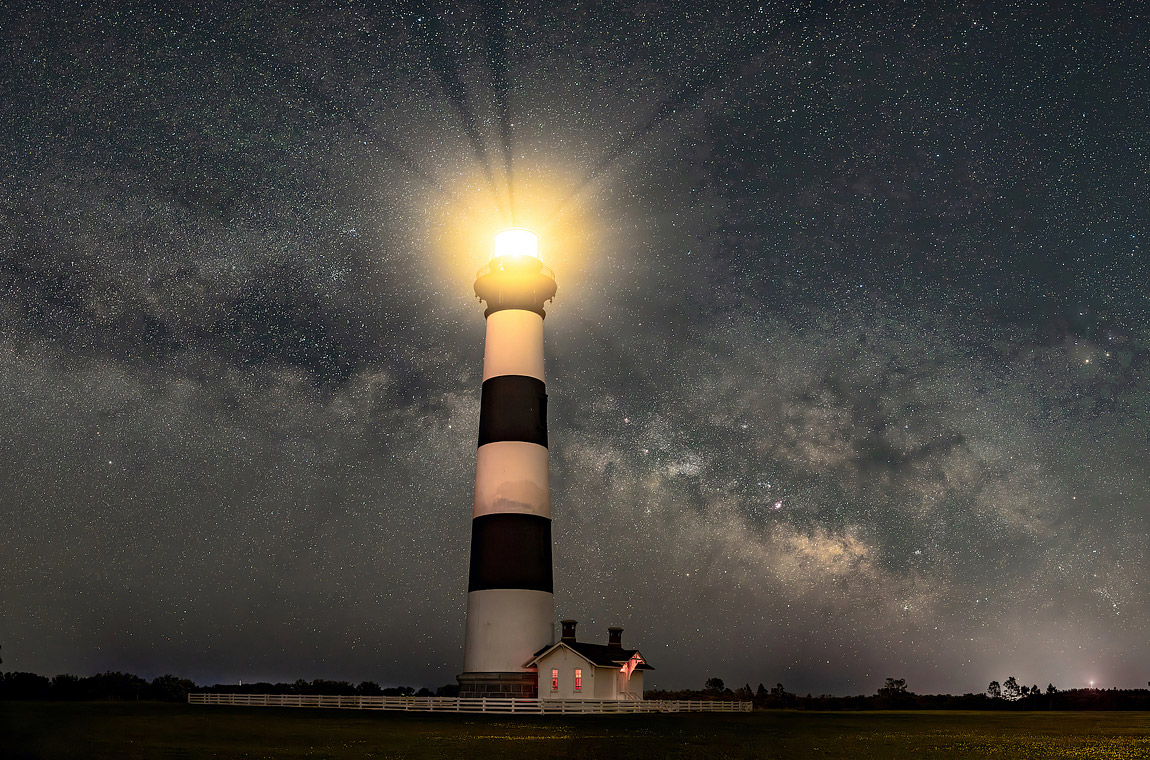I have always dreamed of visiting the Outer Banks of North Carolina and photographing its lighthouses. As a night photographer, capturing the Milky Way with one of the lighthouses was at the top of my list, and Bodie Island Lighthouse was a significant part of that dream. I finally undertook the long journey flying across the United States and fulfilled my dream. Coming from Alaska and flying to North Carolina was an adventure in itself, but it was absolutely worth it.
I still remember seeing Bodie Island Lighthouse for the first time. It was in the afternoon, and after a moment of taking the view, I began examining all the details of that stunning 156-foot (48-m) lighthouse built in 1872. As the hours passed, I emerged from that detailed trance and reminded myself to scout the area for my night shoot. I used the daylight to recon the area, searching for different angles and compositions while considering what I wanted to achieve that night. PhotoPills was my go-to app for planning my shot with the Milky Way.
The sunset created a beautiful light and, to my surprise, brought out thousands of mosquitoes. I had always thought mosquitoes were the Alaska state bird; I couldn't imagine another place having more mosquitoes than home. After a "bath" of mosquito repellent and adding long sleeves and extra layers, I waited for the Bodie Island Lighthouse light to turn on.
Every lighthouse has a different light pattern. I needed to learn the pattern and time it correctly to avoid overexposing my images. The Bodie Island Lighthouse's flashing light pattern is 2.5 seconds on, 2.5 seconds off, 2.5 seconds on, and then 22.5 seconds off.
I spent a long time studying the pattern and taking practice shots to ensure I had it right, all while I waited for that magical moment.
And finally! This is a panoramic image composed of 10 photos stitched together using Lightroom.


